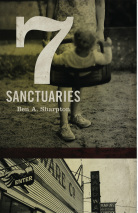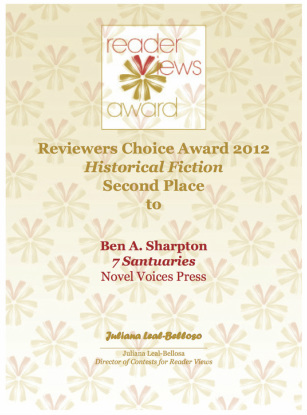NOTE: 7 Sanctuaries is not available at this time while it undergoes a rewrite, editing and a little tune-up. A second edition will be released in the near future. Check here for updates.
An Unusual Time of Transformation
A time like few others, when forces converged on a world that would never be the same again. When people face times of tumultuous transformation, they often seek solace and comfort in safe havens, sanctuaries to protect themselves and their loved ones from the stormy world around them.
So it was. Desegregation, a war in Southeast Asia, a growing group of idealistic young people, technological marvels and new threats abroad and domestic swirled together to usher in a season of change such has never been seen before. People sought refuge in their own safe places. 7 Sanctuaries will introduce you to characters like George Roberts, the businessman, Rev. Stephen Phillips, the ‘Radical Preach”, Rob, a student and his mother, Katie as they experience the 60s from the perspectives of their own sanctuaries. They will be joined by the gentle giant stoner, Dave and his flowerchild girlfriend, Missy, Mayor El Rawlings and Larry Watson who sported the first Afro in Springlake, Florida. Their lives intertwine through the decade and come together in one night of fear, tragedy and hope. Some sanctuaries stood the test of time. Others did not. "A well-told tale about a time we cannot afford to forget." Read 7 Sanctuaries for your next Book Club MeetingDrop me a not if you'd like to invite me to lead your next book club meeting by Skype/FaceTime (Apple) teleconferencing or in person.
Or, Do It Yourself...
Interested in leading your own book club study of 7 Sanctuaries? Download the free Leader's Guide by clicking on the Download File link below.
Free Books for Book Reviewers If you are a book reviewer, or you write a blog, you can receive free copies of 7 Sanctuaries by clicking here and leaving a note on the Comment Me page.
|
7 Sanctuaries book trailer
| ||||||||||||
| 7_sanctuaries_epilogue.pdf | |
| File Size: | 93 kb |
| File Type: | |
Missy's Story

I kinda missed Missy, the spacy hippie girl who visited Stephen Phillips in Springlake, so I wrote a short story about her and things that happened in our country on about July 21, 1969. Click on the button below to download a .doc file of the story.
"Something In The Air" won 2nd Honorable Mention in the Writers/Editors Network (formerly Florida Freelance Writers Association) contest.
"Something In The Air" won 2nd Honorable Mention in the Writers/Editors Network (formerly Florida Freelance Writers Association) contest.
Comment
This comment came from the wife of a retired minister. Thank you!
"I really liked it. It certainly brought back memories of what life was like back then. The characters brought faces to mind of people I actually knew. I never thought of work as being a sanctuary but it certainly is. One tends to think of a sanctuary as a physical location but it certainly can be a relationship.
"Thank you very much for sharing with us. I will be on the lookout for The 3rd Option."
"I really liked it. It certainly brought back memories of what life was like back then. The characters brought faces to mind of people I actually knew. I never thought of work as being a sanctuary but it certainly is. One tends to think of a sanctuary as a physical location but it certainly can be a relationship.
"Thank you very much for sharing with us. I will be on the lookout for The 3rd Option."

